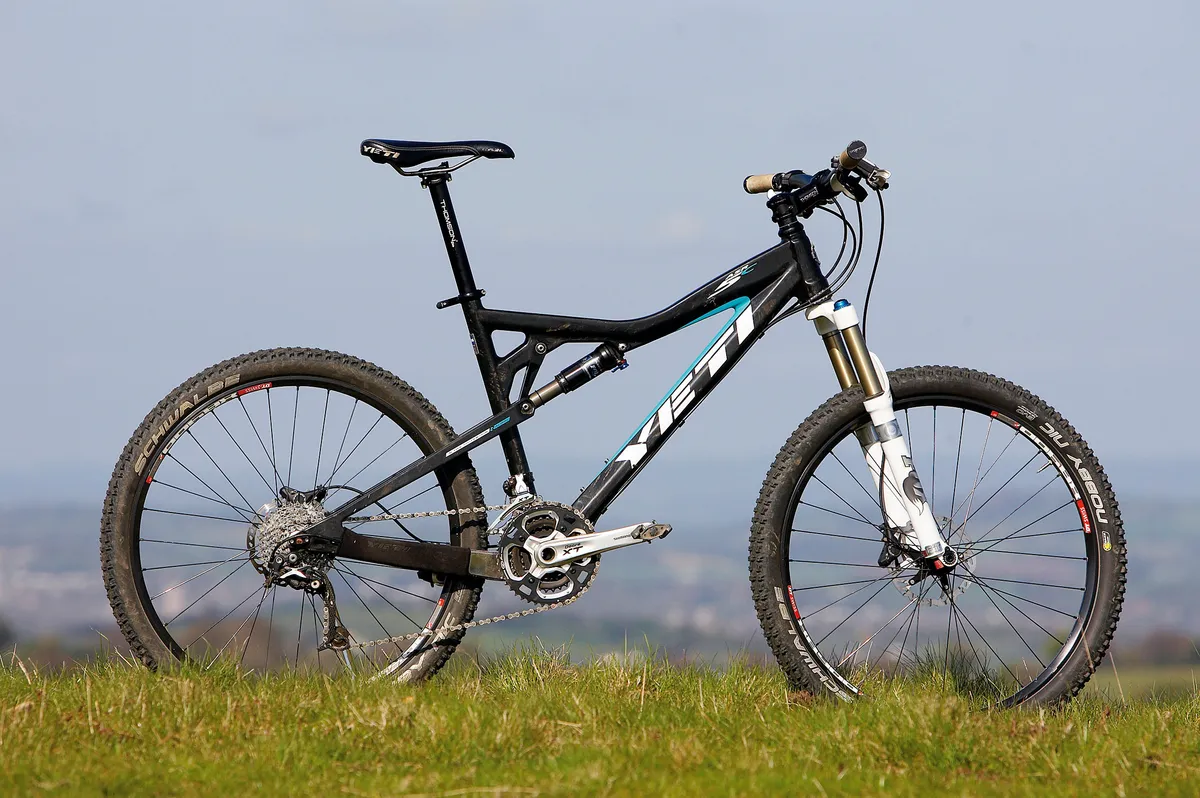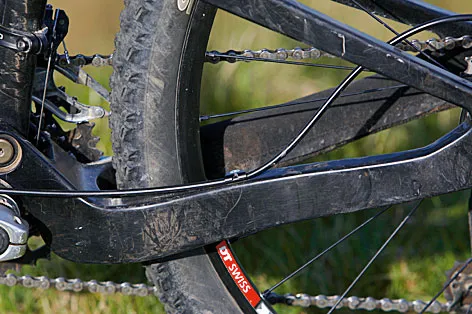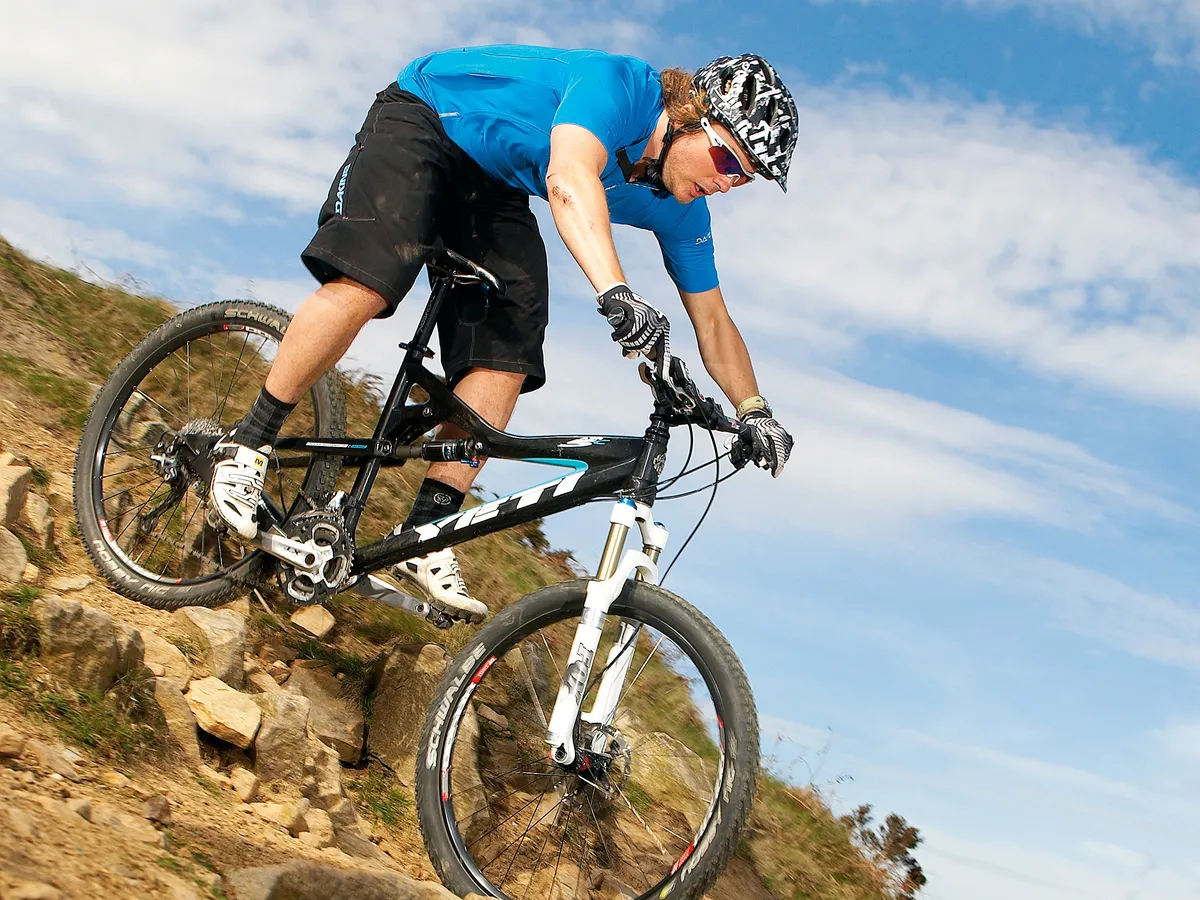We first met Yeti’s new rapid-response trail racer one dusty desert dawn in Nevada. The memory of its speed, accuracy and addictively feedback-rich ride has lasted a hell of a lot longer than our tans.
For a relatively small company, Yeti are never afraid to push the boundaries and create distinctive rides. This carbon incarnation of the ASR5 is a state-of-the-art bike too.
Ride & handling: Purpose, resilience and stability
We rode a lot of very fancy machinery at Interbike last year, a lot with significantly more travel than the ASR5. But few, if any, of the bikes tackled the trails with its raw tenacity.
It’s easy to see why Yeti president Chris Conroy refers to it as the 'cheater' bike. Straight away, the long, low ride and super-stiff power transfer put real purpose, attitude and hunger for altitude into our riding.
The progressive shock stroke means the bike never feels soft or baggy, either. While it’s not the smoothest over square edges, it sniffs out loose traction very impressively.
The bob/bite balance from the rear end is excellent too, and we rarely feel the need to reach for the ProPedal lever on the shock, except on long, smooth trails.

You do have to work a bit harder to weave the longer bike and slacker front end through tight stuff at low speeds, but when the trail starts to go down and the technical index goes up, it pays back by the double.
At 68º, it's as slack and stable as most 140-150mm bikes, and has less pitch from the progressive, shorter-travel suspension. It’s a lot more predictable under braking, too.
Add the seriously stiff spine line that runs from the screw-in rear wheel, down the super-deep chainstays and through the big down tube and head tube into the tapered fork, and the Yeti carves like a cleaver.
The long wheelbase makes the bike stable when you're going at high speeds or drag braking down really steep stuff. In short, nothing is off the menu, however extreme your idea of trail riding is.
Obviously there’s a limit to what the bike will soak up on a regular basis, but if you’re looking for a very distinctive, sensory ride to expand your cross-country limits then the Yeti is a stand-out super-bike option.
Frame & equipment: Customise the extras to suit you
The reinforced tapered head tube runs into large, slab-sided frame tubes. The kinked top tube increases standover clearance and creates a straight load path for the rear shock too. The top seat corner is also triangulated, giving support to the machined alloy swing link as well as extra strength.
Typically for Yeti, there’s no rear pivot, just engineered flex in the surprisingly chunky seat stays, which run right up to the shock.
It’s the super-deep chainstays that really stand out, though, complete with a big wraparound metal gouge guard behind the chainset. Yeti deliberately chose to increase strength and stiffness here rather than drop weight, but at only 2.1kg (4.7lb) including shock, this is not a lardy bike.

Replaceable dropout chips also make the ASR5 compatible with either quick-release axles (standard fit), Maxles or bolt-through axles (at £40 extra cost). Routing at the top of the stays also means the replaceable cables soak up chain hammer on rough ground, rather than the carbon.
Yeti only supply the frame, so you’re free to build up the bike any way you want. The spec of our sample is a very good template to work from.
A 15 or 20mm screw-through fork and matching wheels are definite must-haves if you want to capitalise on the stiffer tapered top end. Decent-sized tyres are a wise move too, because the bike encourages you to go balls-out rather than backing off.
On that note, we'd definitely recommend sizing up on the front brake rotor and saving weight in the system by choosing a different brand of anchor.
In cockpit terms, the generous top tube length means you can go short on the stem without losing breathing space; a set-up that works perfectly with the relaxed steering angles for tearing up technical descents.
It’s this double-edged aspect to the bike that stood out the most after our first ride, and has continued to shine on our more recent excursions.
Despite the extra travel, the ASR5 Carbon isn't much heavier than the Anthem and Merida we reviewed recently. And with faster tyres, it’ll match them stroke for stroke on speed.



